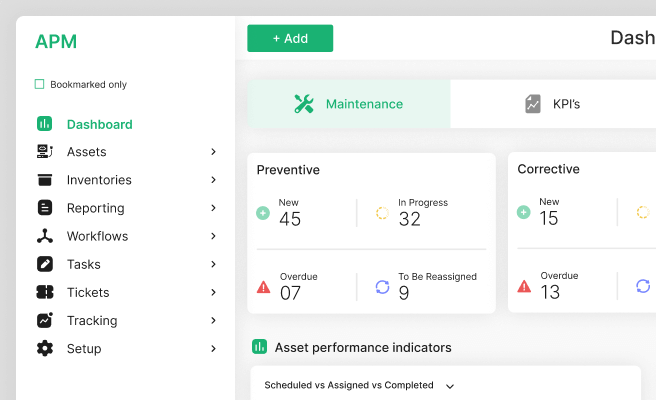Design Iteration
<p>Design iteration is a crucial process in the field of digital design, particularly for climate tech companies. It involves repeatedly refining and improving a design based on feedback, testing, and evaluation. This cyclical approach ensures that the final product meets user needs and achieves the desired functionality and aesthetics.</p>
<p>Historically, design iteration has roots in engineering and manufacturing, where prototypes would be tested and refined before final production. In the digital age, this concept has evolved to encompass a more agile and user-centric methodology, significantly impacting fields like software development and digital product design.</p>
<h2>Importance of Design Iteration in Digital Product Design</h2>
<p>Design iteration is essential for creating user-centric products. By continually testing and refining, designers can identify usability issues early and make necessary adjustments. This process not only improves the product’s functionality but also enhances the user experience, leading to higher user satisfaction and engagement.</p>
<p>For climate tech companies, design iteration is particularly vital. Given the innovative and often complex nature of climate tech solutions, iterative design allows for the development of products that are both effective in addressing environmental challenges and user-friendly. For example, a company developing a carbon capture application can use iterative design to optimize the user interface, making it more intuitive for operators to monitor and control the system.</p>
<h3>Components of Effective Design Iteration</h3>
<p>Effective design iteration involves several key components:</p>
<ul>
<li><strong>Feedback Loop:</strong> Collecting feedback from real users is critical. This can be done through usability testing, surveys, and direct user interviews.</li>
<li><strong>Prototyping:</strong> Creating prototypes allows designers to test ideas quickly without investing significant resources.</li>
<li><strong>Testing:</strong> Each iteration should be rigorously tested to identify issues and areas for improvement.</li>
<li><strong>Evaluation:</strong> Analyzing test results and feedback to determine what changes are necessary for the next iteration.</li>
</ul>
<h3>Benefits of Design Iteration</h3>
<p>The iterative design process offers numerous benefits:</p>
<ul>
<li><strong>Enhanced Usability:</strong> Continuous refinement leads to a more user-friendly product.</li>
<li><strong>Risk Mitigation:</strong> Identifying and addressing issues early reduces the risk of costly redesigns later in the development process.</li>
<li><strong>Improved Satisfaction:</strong> A product that meets user needs and expectations is more likely to succeed in the market.</li>
</ul>
<p>For instance, IDEO, a renowned design firm, frequently employs iterative design to develop innovative products. Their work on the Elvie Pump, a silent wearable breast pump, involved multiple iterations to ensure the product was discreet, efficient, and user-friendly, ultimately revolutionizing the market.</p>
<h3>Challenges in Design Iteration</h3>
<p>Despite its benefits, design iteration comes with challenges:</p>
<ul>
<li><strong>Time-Consuming:</strong> The process can be lengthy, requiring multiple rounds of testing and refinement.</li>
<li><strong>Resource Intensive:</strong> Iteration often demands significant resources, including time, money, and expertise.</li>
<li><strong>Managing Feedback:</strong> Synthesizing and prioritizing feedback from various sources can be complex.</li>
</ul>
<p>However, these challenges can be mitigated through effective project management and the use of tools like <a href="https://www.sketch.com/" style="color: #2896FF; text-decoration: underline;">Sketch</a> and <a href="https://www.figma.com/" style="color: #2896FF; text-decoration: underline;">Figma</a>, which facilitate rapid prototyping and collaborative design.</p>
<h2>Implementing Design Iteration in Climate Tech</h2>
<p>For climate tech companies, implementing design iteration can lead to groundbreaking solutions. For example, a startup developing a smart irrigation system for sustainable agriculture can use iterative design to refine sensor placement and data visualization, ensuring the system is both effective and easy to use. Each iteration can incorporate feedback from farmers, leading to a product that significantly improves water efficiency and crop yields.</p>
<h3>Case Study: Iterative Design in Action</h3>
<p>An excellent example of iterative design in climate tech is the development of the <a href="https://www.climeworks.com/" style="color: #2896FF; text-decoration: underline;">Climeworks</a> direct air capture (DAC) technology. Climeworks used an iterative approach to refine their DAC units, incorporating feedback from field tests and scaling up from small pilot units to large-scale installations. This process has enabled them to optimize performance and reduce costs, making their technology more viable for widespread adoption.</p>
<h2>Conclusion</h2>
<p>Design iteration is a fundamental process in digital product design, especially for climate tech companies. By continuously refining and improving their products, these companies can create solutions that are not only innovative and effective but also user-friendly. Embracing design iteration can lead to significant advancements in climate tech, driving both environmental and business success.</p> <p>We’re using the power of design to increase the adoption of climate technologies and innovation. View our work in climate to know more on how we can support your vision. <a href="https://www.whatifdesign.co/climate" style="color:#2896FF; text-decoration:underline;">View our climate projects</a>.</p> <p>Increase user engagement that converts your demos into sales. Optimise your UX strategies with our audits.
<p>Fill out the <a href="https://tally.so/r/n97pxQ" style="color:#2896FF; text-decoration:underline;">UX Audit form</a> to get started. Ready to discuss your needs? <a href="https://cal.com/akhilak/what-if-design?duration=25" style="color:#2896FF; text-decoration:underline;">Book a consultation call</a> with us today.</p></p>

Let's scale your impact with great design.
Free consultation, no sales pitch
Thank you! Your submission has been received!
Oops! Something went wrong while submitting the form.
Let’s talk
Nothing great is built alone.
Let’s connect about your vision, our work and how we can collaborate.
Get in touch

